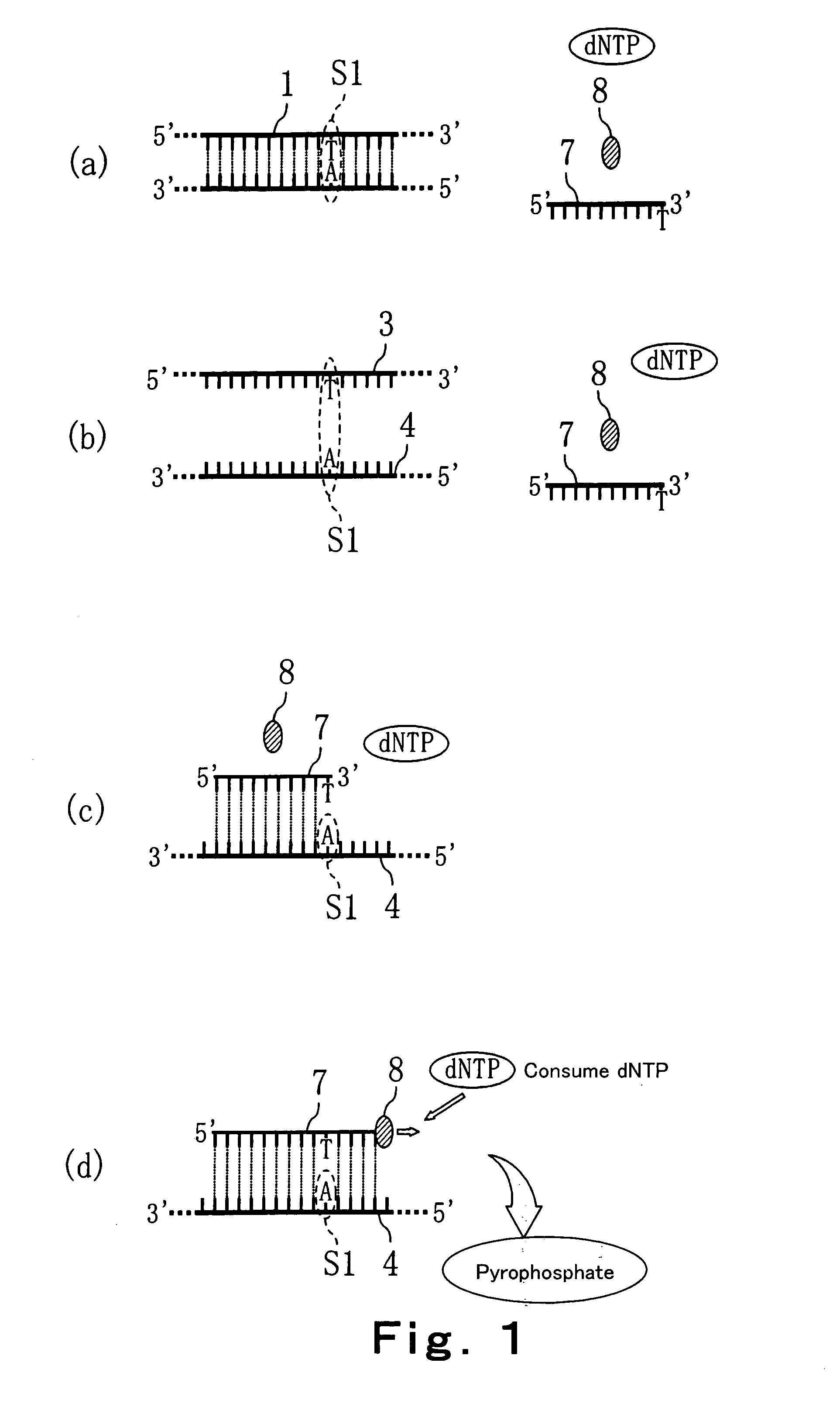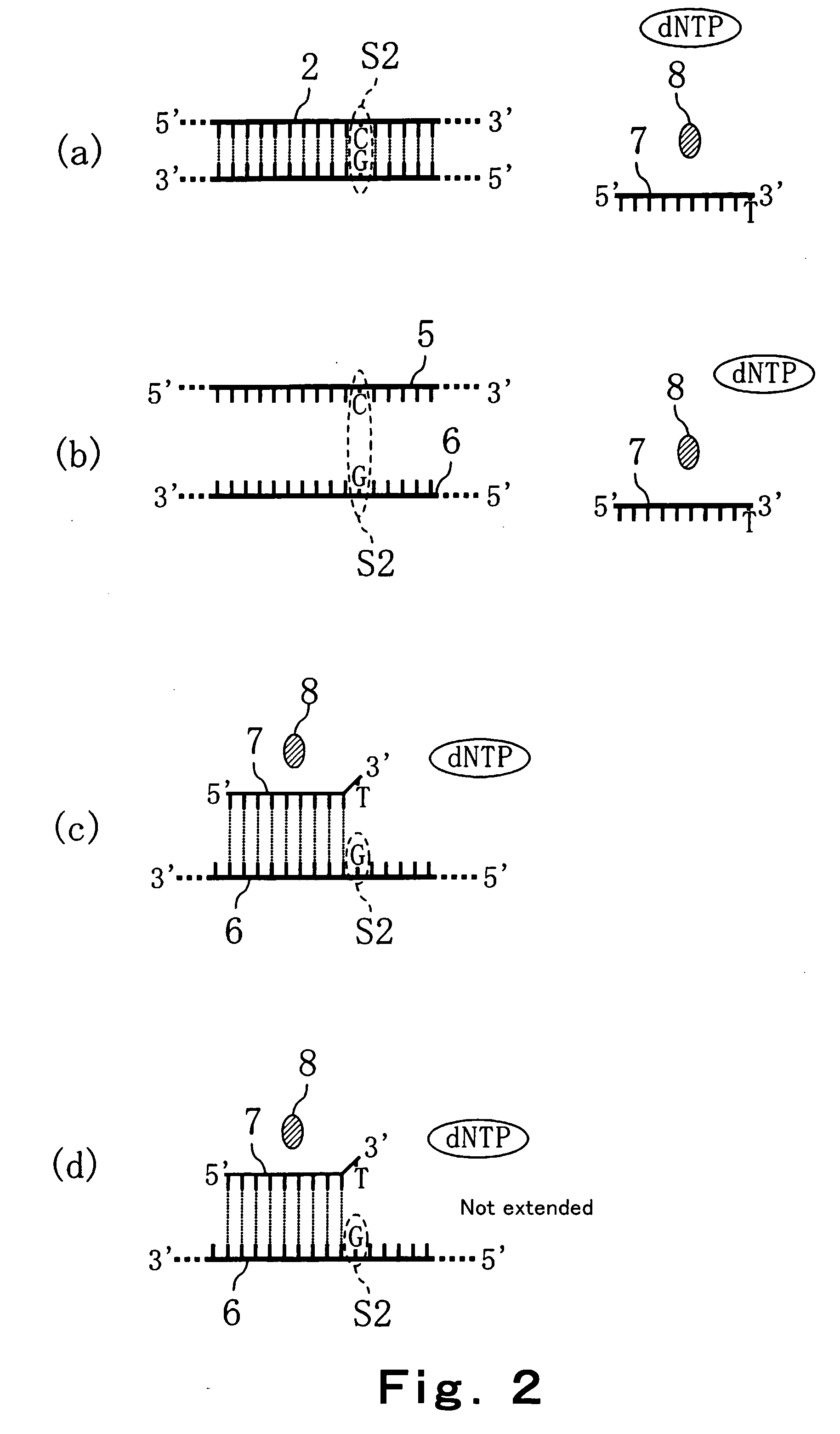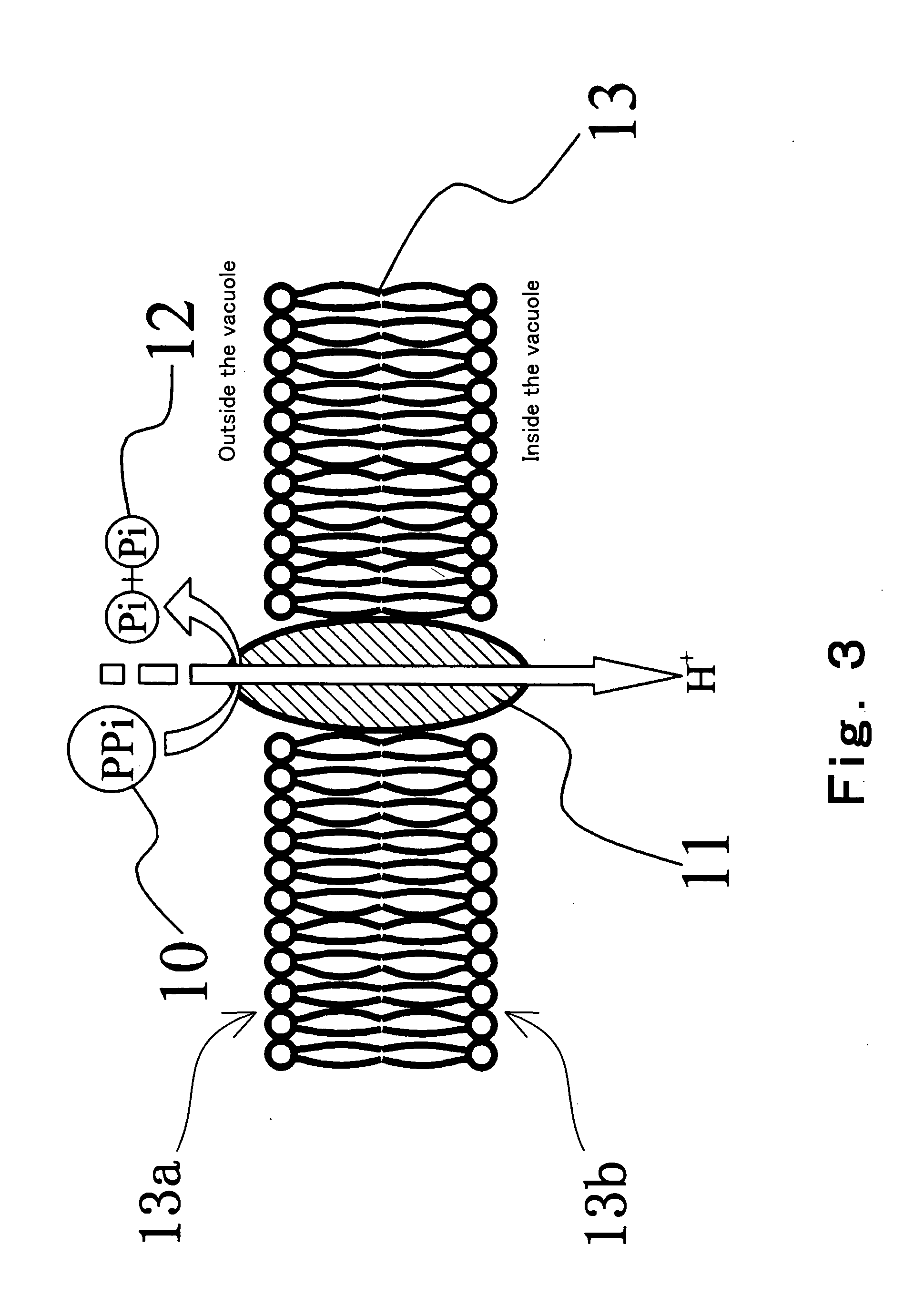Method of detecting primer extension reaction, method of discriminating base type, device for discriminating base type, device for detecting pyrophosphate, method of detecting nucleic acid and tip for introducing sample solution
a technology of primer extension and primer, which is applied in the field of primer extension reaction, can solve the problems of affecting the detection method of amplified nucleic acids having a target base sequence, consuming time period of 1 to 5 days, and burdening the user, and achieve the effect of reducing the concentration of h+
- Summary
- Abstract
- Description
- Claims
- Application Information
AI Technical Summary
Benefits of technology
Problems solved by technology
Method used
Image
Examples
embodiment 1
[0095] In this Embodiment, a method of discriminating the base type of a SNP site of a target DNA in a sample is explained. Specifically, methods in which a primer extension reaction (for example, an amplification reaction such as PCR method, ICAN method, LCR method, SDA method, LAMP method or the like) is utilized using 4 kinds of dNTPs is explained with reference to FIG. 1 and FIG. 2. FIG. 1 and FIG. 2 are process drawings showing the method of discriminating the base type of a SNP site of a target DNA in a sample according to this Embodiment.
[0096] In the method of this Embodiment, a primer is used which substantially complementarily binds to a base sequence including a SNP site of a target DNA, and causes the difference of progress of the extension reaction depending on the base type of the SNP site of the target DNA (hereinafter, referred to as a typing primer). In this Embodiment, an example is demonstrated in which there exists a possibility that the base of a SNP site in a ...
embodiment 2
[0172] In this Embodiment, a method of discriminating as to whether or not a DNA having a particular base sequence is included in a sample, i.e., a method of detecting a DNA having a particular base sequence is explained. Specifically, methods in which a primer extension reaction (for example, an amplification reaction such as PCR method, ICAN method, LCR method, SDA method, LAMP method or the like) using 4 kinds of dNTPs is utilized is explained with reference to FIG. 10. FIG. 10 is a process drawing showing the method of discriminating as to whether or not a DNA having a particular base sequence is included in a sample according to this Embodiment.
[0173] In the method of this Embodiment, a primer having a base sequence which can complementarily bind to a DNA having a particular base sequence is used.
[0174] First, in the step illustrated in FIG. 10 (a), a primer 101 having a base sequence which can complementarily bind to a DNA having a particular base sequence, DNA polymerase 8 ...
example 1
[0206] In this Example, detection of λDNA (with regard to entire base sequence of λDNA, see, Accession No. V00636, J02459, M17233 and X00906 of GenBank database) in a sample was conducted.
[0207] First, a sample liquid A containing λDNA (manufactured by Takara Shuzo Co., Ltd.) at the concentration of 10 ng / μL dissolved in distilled water, and a sample liquid B consisting of distilled water alone were provided. Also, as shown in FIG. 14 (a), primer solutions E and F containing two kinds of primers C and D, which can completely hybridize to a particular base sequence of λDNA, dissolved in distilled water (20 μM each), respectively, were provided.
[0208] To the aforementioned sample liquids A and B were respectively added TaKaRa La Taq (5 U / μL, manufactured by Takara Shuzo Co., Ltd.), 2×GC buffer I that is a buffer for exclusive use of TaKaRa La Taq (manufactured by Takara ShuzoCo., Ltd.), a dNTP mixture (each concentration of 2.5 mM, manufactured by Takara Shuzo Co., Ltd.), and primer...
PUM
| Property | Measurement | Unit |
|---|---|---|
| Volume | aaaaa | aaaaa |
| Volume | aaaaa | aaaaa |
| Volume | aaaaa | aaaaa |
Abstract
Description
Claims
Application Information
 Login to View More
Login to View More - R&D
- Intellectual Property
- Life Sciences
- Materials
- Tech Scout
- Unparalleled Data Quality
- Higher Quality Content
- 60% Fewer Hallucinations
Browse by: Latest US Patents, China's latest patents, Technical Efficacy Thesaurus, Application Domain, Technology Topic, Popular Technical Reports.
© 2025 PatSnap. All rights reserved.Legal|Privacy policy|Modern Slavery Act Transparency Statement|Sitemap|About US| Contact US: help@patsnap.com



